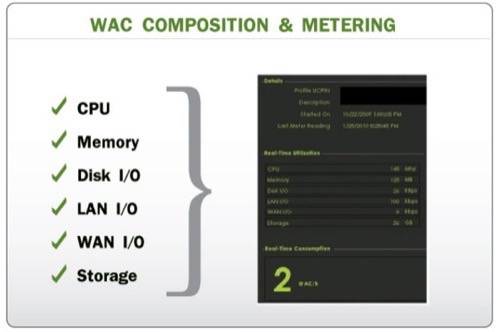
When selecting a cloud provider, you want to make sure that you’re getting the best bang for your buck – but that’s not easy. Unlike hardware offerings, which are relatively easy to compare, cloud providers are all over the map when it comes to pricing and features.
When you look at cloud providers like Amazon, RackSpace, GoGrid and others, you’ll find pretty quickly that it’s not as simple as buying physical servers. With Amazon you’re paying per hour, plus bandwidth, plus fees for load balancing, managing IP addresses and more. Rackspace uses slightly different measurements, and GoGrid offers up yet another set of options that don’t compare apples to apples against EC2 or Rackspace.
Joe ‘Zonker’ Brockmeier is a freelance writer and editor with more than 10 years covering IT. Formerly the openSUSE Community Manager for Novell, Brockmeier is a longtime free and open source software
advocate. You can reach him at [email protected] and follow him on Twitter as @jzb.
It’s not any easier for those who work in the industry and deal with cloud providers on a regular basis. Erica Bresica, CEO at BitRock, says that it looks like it should be possible, “but when you get down to details it gets tricky.
“For example, RAM in Amazon servers is fixed, while it can be selected for GoGrid. However, RAM charges apply for GoGrid even if the server is shutdown, which is counterintuitive and takes most people by surprise … Performance varies wildly between providers and instances, not only in CPU, but I/O as well. So even if, in theory, servers have the same amount of RAM and disk, ‘real performance per buck’ may be wildly different.”
This isn’t just a problem with external providers. Lots of companies need an intelligent way to charge operating costs for cloud services to the right group internally. In the days of physical servers, this was relatively easy. It was made more complicated by virtualization and has gotten extremely sticky with cloud services.
The Workload Allocation Cube
What’s needed is a standard for discussing workloads, and how to measure them. 6fusion is one company that’s trying to tame the pricing problem for cloud computing. I talked to Doug Steele, chief operating officer for the company, about their metering system called the Workload Allocation Cube (WAC).
The goal, says Steele is to measure cloud computing resources in a standard way, much like we measure electricity today. That way, you can have a standard metric for a workload much like you know approximately how much power a server or appliance will use. The cube – so-called because it has six “sides” – measures CPU, Memory, disk I/O, LAN I/O, WAN I/O and storage. So, customers might find that a workload averages 1,000 WACs per month and then be able to pick a provider based on their pricing per WAC. (see diagram below)

The WAC sounds interesting, but there is a catch – you’ll need to be working with 6fusion’s services to be able to use the measurement, at least for now. Steele says that 6fusion is working with partners in Toronto, Calgary, Boston and a number of other locations. The company also offers solutions for private clouds and hybrid clouds, so that companies can benchmark their applications internally and deal with charge backs to departments and groups.
Want to use AWS or Rackspace? Steele says that the company is working on an API to allow federating with Amazon Cloud, Rackspace Cloud and others. The company is also looking at trying to make WAC an industry standard. “We’re talking to different organizations and determining a process for that. It is proprietary right now, with a patent on the algorithm we use to drive it. It’s at that state, but no question that will change in the future.”
Of course, 6fusion isn’t the only party trying to nail down a standard for measuring cloud services. The Cloud Commons, sponsored by CA, is pushing the Service Measurement Index (SMI).
Like WAC, the SMI tries to provide a standard way of talking about cloud services. However, where WAC focuses just on the performance measurements, SMI takes a “holistic” view that takes into account quality, security, risk, cost and capabilities. Development of the SMI is being driven by a newly formed consortium led by Carnegie Mellon. Though it may be useful at some point, it’s not widely adopted or ready for companies to judge potential services.
Takeaway: Shop Around
The unfortunate final word for now? To quote The Miracles, “you better shop around.” But don’t take Smokey Robinson’s word for it – Bresica says that the best advice she can give is what nobody wants to hear. “It depends on your particular requirements, so you need to test each provider.”
Until the WAC (or another standard measurement) becomes standard, companies will need to do some homework and testing before being able to select a provider and be confident that they’re getting their money’s worth.





















